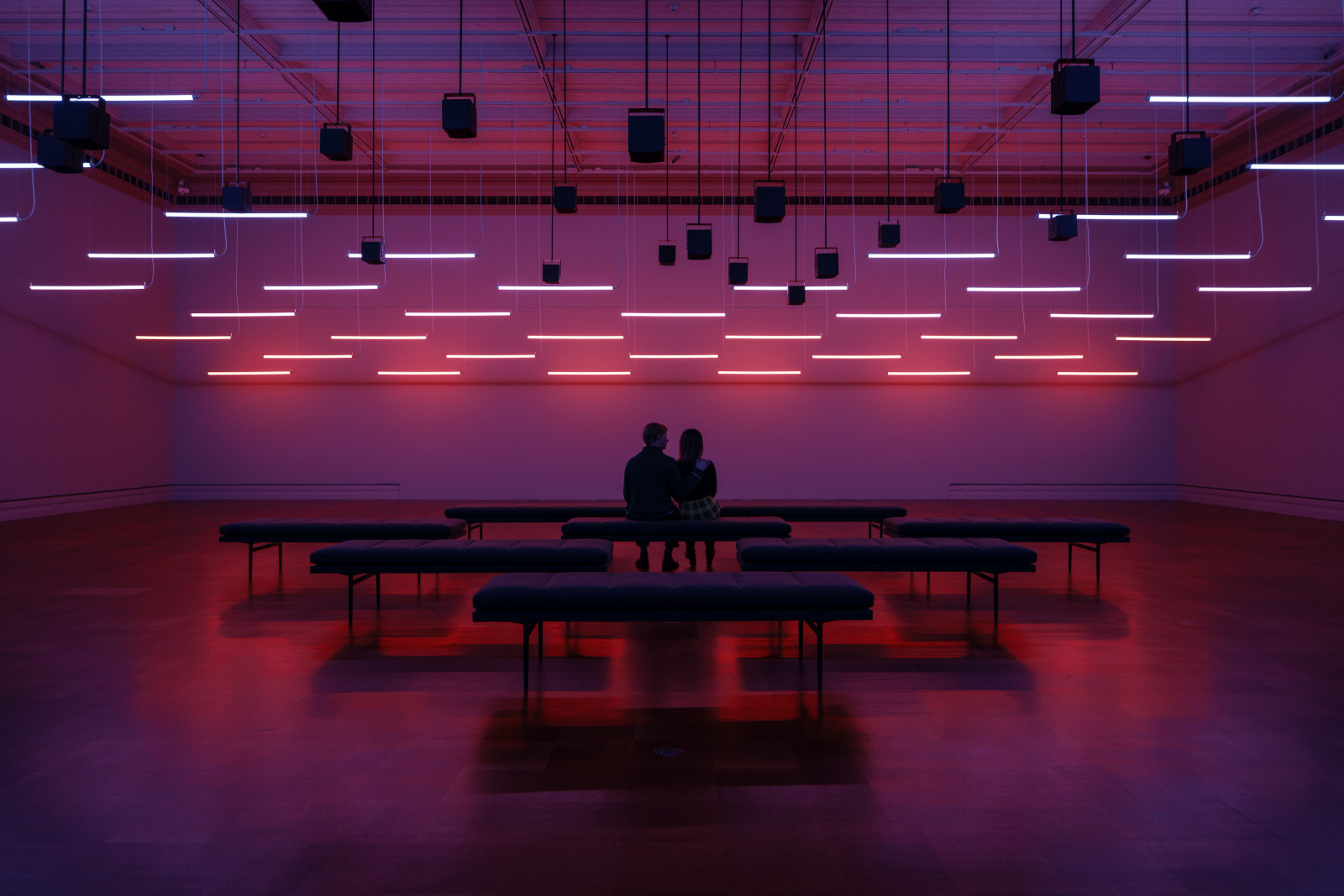Statuette of a Woman with Headdress and Pierced Ears
Statuette of a Woman with Headdress and Pierced Ears
Place of OriginLikely Gilan Province, Iran
DateEarly 1st millennium BCE
Dimensions18 1/4 × 6 × 4 1/4 in. (46.4 × 15.2 × 10.8 cm)
MediumEarthenware with incised decoration
ClassificationSculpture
Credit LinePurchased with funds from the Libbey Endowment, Gift of Edward Drummond Libbey
Object number
1987.196
On View
Toledo Museum of Art (2445 Monroe Street), Gallery, 02, Classic
DescriptionThe figure is highly stylized with an elongated, cylindrical neck that widens toward the shoulders. The arms curve like animal horns and are crossed over the torso, with the hands (digits indicated by incisions) placed one above the other on the abdomen. The face is mask-like with no mouth and a protruding nose, featuring large eyes indicated by three incised concentric rings. The ears are pierced with two holes each, originally intended for jewelry. The breasts are raised, pointed, and incised with single circles. The lower body is defined by massive, swelling hips and buttocks, with thick, diminishing conical legs. The head is topped by a headdress of three raised horizontal fillets incised with a zigzag pattern, forming the opening at the top of the figure. Further decoration includes concentric rings on the shoulders, knees, and navel, and incised lines indicating bracelets on the wrists. On the back, a wide band of intricately incised hair extends from the head to the shoulders.
Label TextThis striking terracotta figure belongs to a group of sophisticated ceramic sculptures found in Iron Age tombs in Northwestern Iran, a region often named after the village of Amlash. Although the Amlash culture left no written records, its burial contexts suggest a ritual or cultic purpose. With its exaggerated hips and buttocks, the figure is widely interpreted as a fertility goddess. These figures were likely offerings or dedications used in ritual to ensure a bountiful harvest and the multiplication of livestock. The design is highly abstract, featuring a mask-like face with piercing eyes indicated by concentric circles, arms curved like animal horns, and a distinctive triple-fillet headdress. Its artistic simplicity and bold geometric abstraction resonated strongly with 20th-century artists, including Pablo Picasso.Published References"Museum and departmental announcements," Newsletter, Midwest Art History Society, no. 15A, Spring, 1988, p. 9.
Toledo Museum of Art, Toledo Treasures, Toledo, 1995, p. 35, repr. (col.).
Fehérvári, Geza, et al., Art of the Eastern world, London, 1996, p. 18, repr. p. 19, (col.).
Comparative ReferencesSee also Fukai, S., Ancient Persian Pottery, Tokyo, pls. 9-12.cf. Pandora, E., The Art of Ancient Iran, New York, 1962, pp. 90-103, esp. fig. 65.
cf. Ghirshman, R., The Arts of Ancient Iran, New York, 1964, pp. 31-39, esp. fig. 32.
cf. Amiet, P., Art of the Ancient Near East, New York, 1980, pp. 200, 221, pl. 94.
cf. Moorey, P.R.S., E. Bunker, E. Porada, and G. Markoe, Ancient Bronzes, Ceramics adn Seals, The Nasli M. Heeramaneck Collection of Ancient Near Eastern, Central Asiatic, and European Art, Los Angeles, 1981, p. 128, no. 727.
cf. Lawton, Thomas, et al., Asian Art in the Arthur M. Sackler Gallery, Washington, D.C., 19878, p. 32, no. 6.
Before 1880
early 12th century
1st century BCE - 3rd century CE
11th or 10th century BCE (Early Western Zhou Dynasty)
750-650 BCE
560-540 BCE
5th Dynasty (2498–2345 BCE)
425-350 BCE

Membership
Become a TMA member today
Support TMA
Help support the TMA mission













